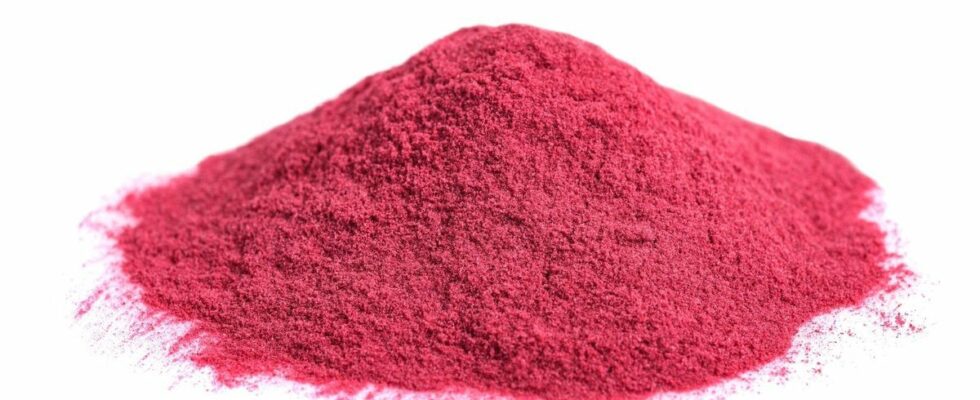Published on
updated on
Reading 2 min.
A synthetic drug with a misleading name has been circulating in France for several years and is gradually gaining momentum. But what is this pink cocaine? And why is it particularly dangerous?
It is powdered, candy pink in color and is said to smell like strawberries. But under this “glamorous” or festive appearance, what we call pink cocaine would not be very joyful. Synthetic drugs, a mixture of different substances, combine the harmful effects of several drugs.
Cocaine? Not really
Pink cocaine, also called “tusibi” (English pronunciation of the synthetic product “2-CB”), has been known since 2010 in Latin America, and particularly in Colombia, a major cocaine-producing country. Today it is much closer to home. Last month, in Ibiza, Spanish police discovered an impressive shipment of synthetic drugs: 300 kilos of ecstasy, 212 kilos of ketamine and 21 kilos of pink cocaine. It has also been circulating since 2021 in certain regions of France, according to a report from the French Observatory of Drugs and Addictive Tendencies.
Colored cocaine? Not really. According to analyzes cited by the OFDT, this drug would in fact be “a cocktail of several substances” without cocaine. It contains ketamine, known for its hallucinogenic effects, MDMA (ecstasy) and caffeine, to which products can be added. “hallucinogens, opiates or medications of any kind”, sometimes flavored, tasting banana, strawberry, passion fruit… which we sniff or inject.
Why is pink cocaine particularly dangerous?
According to the Observatory, consumers describe hallucinogenic and stimulating effects, but do not seem to realize the risk involved. Because the more substances are involved, the more the health risks increase.
Ketamine, for example, can cause violent dissociative effects, in some cases, and breathing difficulties.
Other substances, the presence of which we do not know at the time of purchase, can lead to a very difficult descent, anxiety, suicidal thoughts, loss of consciousness or even an overdose.
All without knowing what you are ingesting. In fact, this newcomer would be responsible for several deaths.
Difficulty detecting it
The other problem with this new drug today is its difficulty in being detected by standard drug tests. It is not yet classified as a drug everywhere, only some of its components are: MDMA and 2C-B are class A drugs, while ketamine belongs to class B.
But faced with the difficulty of controlling its spread, the Observatory and the European Union have highlighted the need to improve access to kits making it possible to check the composition of drugs. Public awareness campaigns are also requested.
